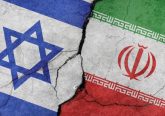Now that sanctions against Iran have been lifted, the country has significant opportunities to boost its investment levels. Still, Iran’s leaders have to address a range of issues before this can be done effectively. Can a public-private partnership provide a solution for the financing of energy infrastructure projects, at a time when Iran is facing declining revenues as a result of years of crippling sanctions? Now the sanctions lifted, political risk disappears, the country offers significant new opportunities for foreign investors: economic attractiveness, greater moderation, and horizontal market integration.
Iran’s New Contract Model
Iran will present its new oil contracts during a scheduled conference in February 2016 in Tehran. By 2020, the country hopes to increase crude production to about six million barrels a day, an increase compared to levels produced before the sanctions imposed by the West in response to its nuclear programme. But Tehran will probably need much more time to achieve this desired level of production. To develop new oil fields and ensure better infrastructure, Iran needs an additional $100 billion in financing from foreign investors. And while lifting sanctions will open up possibilities for external financing, the country also needs international oil companies to establish activities on Iranian soil.
This could be a challenge, as binding regulations have historically made it difficult for energy companies to operate in Iran. The lifting of sanctions strongly brought the oil price down. Iran is the second-largest oil producer, trailing just behind Saudi Arabia for conventional oil. Moreover, th country comes in fourth place, behind Venezuela, Saudi Arabia and Canada, if we include unconventional crude. Beyond the impact of lifted sanctions, the slowdown in global growth, the strength of the US shale industry and the global glut of oil supply (a surplus estimated at one million bpd) continue to fuel the downward spiral of the market.
Iran’s new contract model aims to induce international oil companies to participate in joint venture projects. Under the new Iranian Petroleum Contract, a foreign company would have several years to explore and develop deposits followed by ten to fifteen years of production rights. Meanwhile, the Iranian state-owned oil company, the National Iranian Oil Co, would compensate the foreign company depending on the deposit, production volumes, and oil prices.
Iran needs to consider a Public Private Partnership (PPP) and a legislative framework that would give more flexibility than the current contract in place.
Investments in the Energy Infrastructure
The introduction of a Public Private Partnership in the new Iranian Petroleum Contract (IPC), would allow the private sector to supply public services and infrastructure in the energy sector—both crucial to the development and growth of Iran. The current oil price, which is at a record low, presents an excellent opportunity to create and maintain oil fields and, consequently, provides some scope for private and public sector. Crucially, it would allow the country to address its battered infrastructure, which have suffered from crippling sanctions and under investment.
If companies are reviewing the budget in the development and exploitation of deposits, they have a chance to regain some of that capital through oil sales. If a project is technologically more difficult, it might gain higher income. So even if it requires more investment, it will yield greater returns. Investors will also be engaged in projects over a longer period, which should encourage greater production.
Management is key in the energy sector—partnering private and public actors will prove effective for improving service delivery. Reducing costs and time of executing projects is a priority in a very volatile market. The private sector has the ability to implement project within time and budget and eliminate potential extra costs caused by delays. This presents a significant financial incentive. The aim is not to prioritise the private sector but to balance risks in both sectors. This type of partnership mobilises all the human and financial resources (public, private, international) and thus avoids costly disruptions in public investment programs.
PPPs are a means to optimise resources. They represent a contractual arrangement over the long term by which the public sector transfers to the private sector all or part of construction, financing, operation, and maintenance responsibilities. Contrary to conventional approaches, PPP contracts enable government to determine the tariffs for users as well as the standards that have to be achieved. The Iranian government would still be involved in the supervision of the PPP contract and ensure that public service objectives are met.
While Iran has huge economic and human resources, improving the economic situation will depend heavily on political reforms and major economic changes. The ideological nature of Iran’s system makes it difficult to bet on political and economic reforms capabilities.
A Competitive Edge for Iran?
Iran is at present estimated to hold about 157 billion barrels, or 9.3 per cent of world oil reserves. To put this in perspective: Iraq has 150 billion and Saudi Arabia almost 266 billion barrels. Iranian production in late 2013 was 3.558 million barrels per day (bpd) against 3.751 million bpd a year earlier, a decrease of 6 per cent and a decrease of about 800,000 bpd compared to 2011. Iranian crude oil is light, with a low extraction cost. However Iranian deposits have low recovery rates (between 20 and 25 per cent), which require investment and the injection of more gas into existing wells.
The new Iranian Petroleum Contract could potentially give an advantage to Iran over its competitors in the area in terms of attracting new investments. If we look at it by sector, the most prominent one to benefit from such a partnership would clearly be Iran’s energy industry. US and other foreign investment in Iran’s energy sector should grow strongly, which would allow Iran to develop its production capacity and export oil, gas, and petrochemicals. Several international oil companies have already shown interest in the new contracts. Royal Dutch / Shell, Total of France and Eni of Italy were in Tehran during the last three months to discuss investment opportunities through so-called ‘special conditions contracts’ to reserve ownership for exploration and development.
During the months immediately following the lift of sanctions, European companies will probably be the first to invest. They have the most recent experience of doing business with Iran and they will be less limited by their own governments. It is common to see international players partnering up with local businesses who have a good knowledge of the terrain. This new contract will not only lead the country’s growth but transfer expertise and create new champions in local energy infrastructure.
The analysis of PPP in Iran remains complicated economically due to a prolonged period of black market trading in foreign currencies and the existence of multiple exchange rates. Including a PPP model in the IPC will require the introduction of an effective exchange rate in addition to the USD rate. For that reason, the legal rejection of foreign ownership of petroleum resources (the ability of international companies to ‘book’ reserves) is likely to remain intact irrespective of any future shifts in the ideological complexion of the Iran regime. A specific legal framework for PPPs is required for vibrant financial market to insure the success of this partnership.
Attracting Investors
Low oil prices may have been the catalyst for the promulgation of PPPs. Iran’s new Petroleum Contract will be able to invite private companies and international investors to finance and operate energy assets at an attractive price. It will be interesting to watch the development of PPP in Iran and evolution in this current volatile market as confidence will be built through an increase in the quality and quantity of projects coming in line.
To be viable in terms of attracting foreign investment, the new IPC should include four key things: appropriate risk allocation, a sound financial package, reliable concessionaire consortium, and favourable investment environment. In order to do so, energy projects should be aligned with both public and private parties and ensure the appropriate management structures and procedure to obtain application of those four core aspects. The success of the new Iranian Petroleum Contract model also depends on the specific fiscal terms of the agreement, which have not yet been finalised or announced. And even if Iran really managed to sign new contracts with foreign energy companies, these companies will still face major obstacles when it comes to actually investing, operating and advancing these contracts.
Iran can eventually return to production levels it had before the sanctions, but it will probably take much longer than the ‘immediate effect’ promised. Ultimately, fiscal terms that Iran will offer to foreign energy companies under its new contract model might be appealing enough to overcome the significant challenges that come with operating in the country.
In these partnerships, private companies can offer innovative design and project management skills, and risk management expertise. A PPP IPC will require the private agent to take full responsibility for the performance of the asset over a long term, so that efficiencies arising from long term investment and asset management could be realised. A diversified service can be adopted through these contractual relationships: concession contracts, lease-develop-operate, and build-operate-transfer among others.
PPP represents a collaboration between public and private sector for the purpose of delivering a project traditionally provided by the public sector. The sole challenge will be to find the right balance and trust between private sector capacity, government regulatory function and public satisfaction. Adding the political and social obstacles that will come through different phases of projects, the lack of legal framework and the rising of tariff to cover the costs of projects may face some important challenges. This new financing model will allow the presence of foreign investors in projects but in an operational and reasonable manner.
Only time will tell, but there are efforts being made to attract international investors in Iran. Future work is clearly needed before a PPP can be added to Iran’s economic model in a satisfactory manner. Partnership, if precisely planned and structured, can be a powerful tool not only to keep public company viable but also to address cost and investment challenges, improve efficiency and service quality, increase expertise, attract more rapid and substantial investments in infrastructure and new energy technologies.
This article was first published at the Foreign Policy Association Blog.






